We all know how important, and how difficult it is, to get your horse going straight. This time, Christian Thiess explains the ‘how’ of getting that essential straightness by riding the horse into the outside rein, Christian tells us …
As I mentioned previously one of our tasks as riders is, when we encounter our horse’s natural crookedness during the preparation, is to influence them to move straight. The first step in this progress is to make the horse accept the bit evenly on both sides.
Only a horse who accepts the bit correctly and evenly, is capable of making further improvements. This is the only way the rider can gain control over the horse’s hind legs and influence them, and therefore the horse, to move straight.
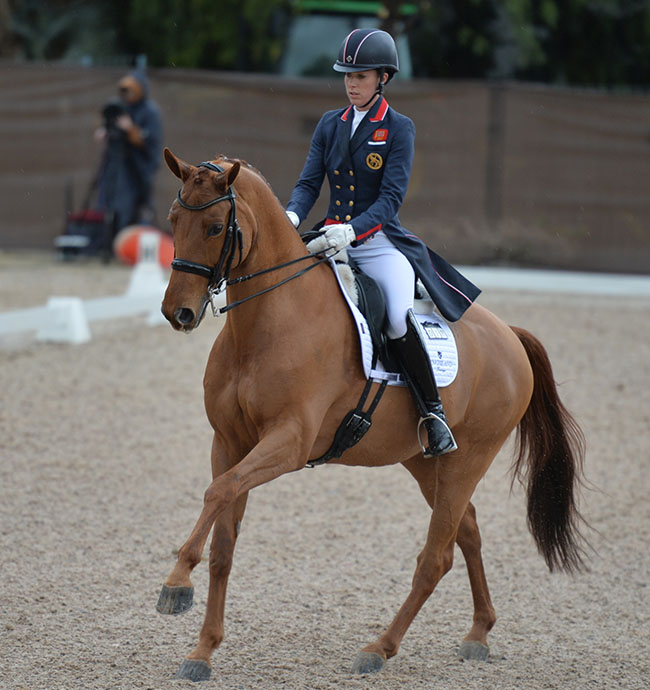
Charlotte Dujardin and Barolo – straight
To influence the horse to accept both sides of the bit evenly seems to be a big hurdle for most riders, especially those who find their horse leans on the bit on its stiff side, and feels hollow and reluctant to take a contact on the opposite side. But it doesn’t need to be!
There is good news! There is a riding technique which can help you achieve your goal. The technique is called riding the horse into the outside rein. The German expression is Das Pferd anden ausseren Zugel heran reiten.
How can you learn this technique? Fortunately there are some simple exercises to help. The easiest way is to ride your horse on a circle at walk and engage the inside hind leg through a half parade (half halt – click to go to Christian’s half halt article), and at the same time push the inside hind leg under the horse’s body in the direction of the outside rein.
To do this you will need to apply a lateral aid, which will be the half parade on the inside. At the same time you will have to apply a diagonal aid. This will be the pushing of the inside leg in the direction of the outside rein.
more follows
![]() The aids need to be very similar to shoulder in. In fact, at walk they should be exaggerated and the result should be a shoulder in on the circle. If you are not familiar with riding shoulder in, begin with aids similar to leg yield. This will be the first step towards achieving the goal of riding the horse straight.
The aids need to be very similar to shoulder in. In fact, at walk they should be exaggerated and the result should be a shoulder in on the circle. If you are not familiar with riding shoulder in, begin with aids similar to leg yield. This will be the first step towards achieving the goal of riding the horse straight.
Try to offer the horse a firmer contact on the outside rein. Also, try if necessary to increase the pressure of your inside leg until the horse is really bending his inside hind leg under his body in the direction of his centre of gravity (body mass). The inside leg will step closer and in front of the outside one.
At the same time try to use your outside leg to prevent the horse’s outside leg from falling out. Try to keep it stepping in the line of the outside foreleg. In the moment when the horse stops resisting, and engages and bends his inside hind leg, you will feel a wonderful difference. It is almost as if a magical change has occurred. The horse will suddenly flex at the poll and accept the contact with the outside rein. By accepting this contact he will take an even contact on the bit – in other words, he will take the inside rein too. This is essential and is the key value of the technique.
You will feel that you have full control over the hind legs of your horse and therefore you will be able to control and influence the whole horse. You will have him 100% on the aids.
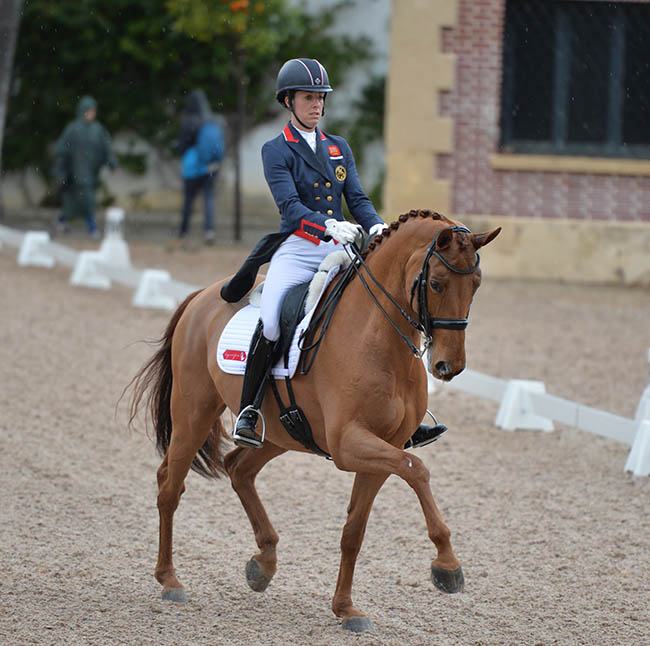
Charlotte and Barolo – 100% on the aids
At the trot or canter you should not aim to actually ride a proper shoulder in (or leg yield) on the circle. Instead you should aim to apply the aids in a similar manner to when you ride shoulder in (or leg yield). Emphasize to the horse that he should engage his inside hind leg and push it in the direction of the outside rein. It is most beneficial if the horse comes to a shoulder-fore position.
As a rider it is important to realize that to be able to ride the straightening exercises correctly, it is necessary to be able to apply the aids correctly, especially the half parade inside at the right moment. It is through using the half parade at the correct time that we, as riders, are able to really influence the inside hind leg.
Now that we have looked at the first step in straightening the horse, let us look at some of the problems or resistances we may encounter with our horses. Let’s begin with an example of riding a right footed horse. As you will remember from the first article, the majority of horses are right footed.
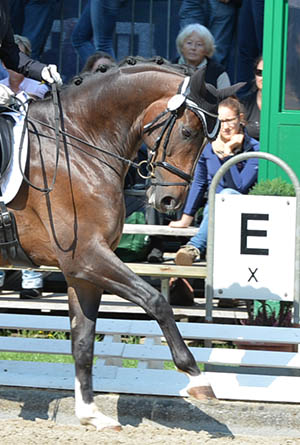
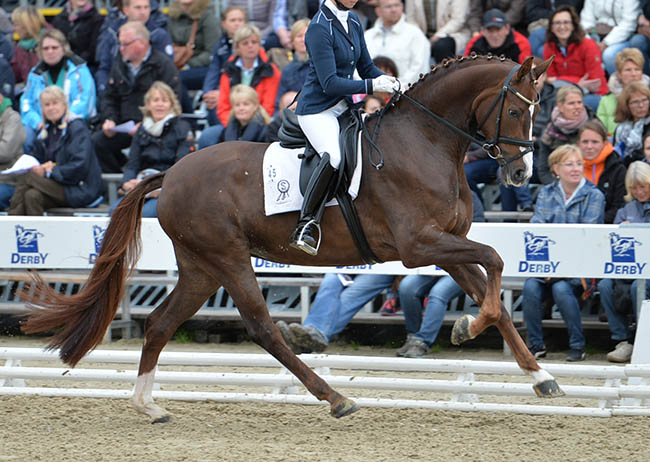
Right Hind leg stepping under the body
When you try to ride a right footed horse into the outside rein on the right rein (that is going to the right) you will have more difficulties influencing the horse to engage his right hind leg and step under his body. The right hind leg is the leg which generates all the problems related to the crookedness. But don’t despair. You will find it easier to achieve a contact on the outside rein by using the horse’s tendency to fall over his left shoulder. In this way the horse will look for support by trying to lean on the left rein.
The right handed horse will try other evasions to avoid engaging the right hind. One is to curl his neck at the shoulder to the right. In this way the horse will increase his tendency to fall over the left shoulder. The rider can correct or limit this evasion by limiting the horse’s neck bend with the left rein contact, combined with a stronger influence of the right leg.
The horse may also push against your right leg with his right hind. Once again, this can be corrected through using stronger right leg aids. If this doesn’t help, you will have to interrupt the exercise and ride the horse forward in an energetic working trot, and do some suppling exercises such as transitions to working canter and back to trot. Then go back to the previous exercises and gradually increase your demands.
Do not despair if the horse does not respond as you wish at the first time of asking. It is worth comparing the horse with a person who is participating in their first aerobics class. At first they are not supple or athletic enough to be able to execute every exercise well. However, over time they improve until not only have they mastered the original exercises, but they can graduate to more difficult ones.
On the left rein with a right handed horses you will have fewer difficulties engaging the left (inside) hind leg because this leg’s joints, ligaments and muscles are already used to engaging and carrying the weight.
However, you may have serious difficulties influencing the horse to bend to the left because his left side is his stiff side. Often the horse leans on the left rein, and riders have problems correcting this. Also the horse avoids accepting the contact with the right outside rein (because the right side is his hollow side). It helps to apply coordinated half parades inside every stride to engage the horse’s inside hind leg and to try and supple him on the left side.
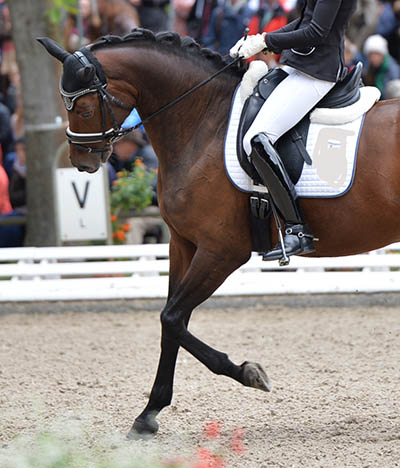
When your aids are successful (come through) you will influence the horse to stop leaning or pushing against the left rein. The horse will suddenly accept the outside rein and therefore the bit.
You also may have difficulties on the left rein with the outside hind leg, which is the leg which causes the problems by trying to avoid stepping in the tracks of the outside foreleg. By keeping your outside leg firmly behind the girth you should correct this evasion. However, sometimes this will not be enough and more engagement of this hind leg to keep it strictly in the track line of the foreleg will be beneficial.
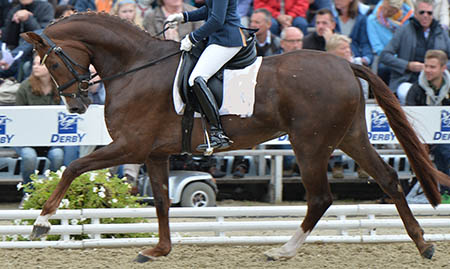
If your horse ever loses the even contact with the bit through a variety of evasions it is now very simple to correct him. First of all you must understand that when the horse tilts his head, or comes above or behind the bit, or tosses his head, champs on the bit or leans on one side, he is trying to avoid engaging his hind legs and stepping into the contact. By increasing the demands on the inside hind leg to engage more, you will be able to influence the outside hind leg easier. Through controlling the hind legs you will be able to straighten the horse, and as a consequence he will accept the outside rein, and as soon as he accepts this, he will accept the contact with the entire bit. Therefore the evasion will disappear.
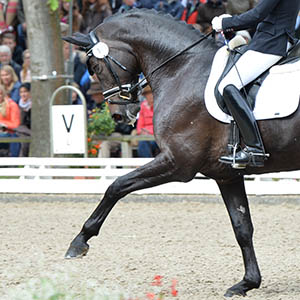
more below
From my experience, riders in England or in countries which have been heavily influenced by English equitation, like Australia and New Zealand, find that riding the horse on the outside rein causes a lot of confusion. Some people believe that it is incorrect to try ride the horse on the outside rein because the horse should accept the bit evenly on both sides, rather than on one side alone. However, it is necessary to understand that the horse cannot accept only one side of the bit. He can lean on one side, but he will not accept only one side in isolation. In other words, if the horse is accepting one side of the bit, he must be accepting the whole bit. Therefore, by riding the horse into the outside rein, we succeed in both straightening the horse and influencing him to accept the contact with the outside rein, and therefore with the entire bit.
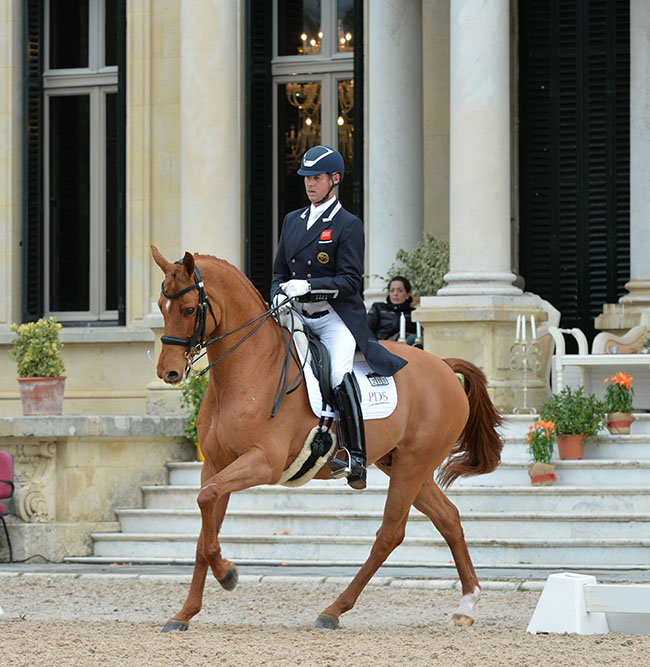
To conclude, I would like to re-state the essence of riding the horse into the outside rein:
Through engaging and bending the horse’s inside hind leg, the rider will be able to influence and engage the horse’s outside hind easier and therefore push the horse from behind into the bit. This will cause the horse to accept the bit. Then the rider really will be able to ride the horse, influence him, exercise, bend and model him. The horse is said to be ‘in front of the rider’s legs’.


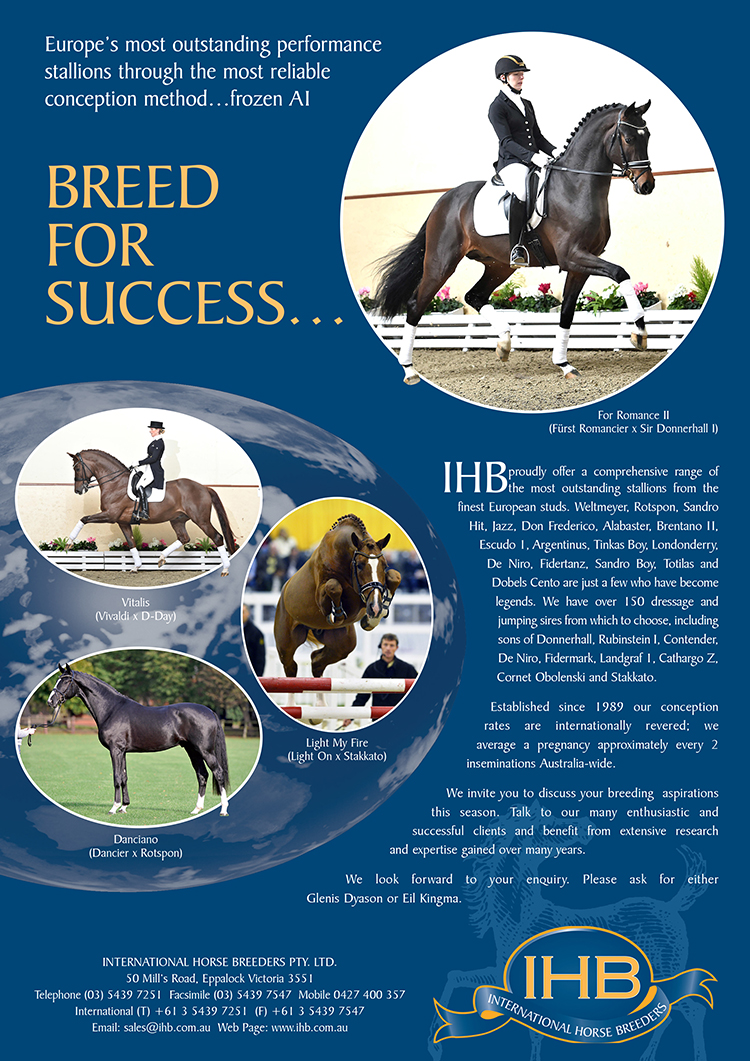
Great article Christian, Thank you!
Calm, forward and straight. I’m learning this outside rein and the wonderful connection and influence I have over my mare. And she appreciates my guidance.
Chris Porter.
Brilliant article. Simple to understand too. Thank you.